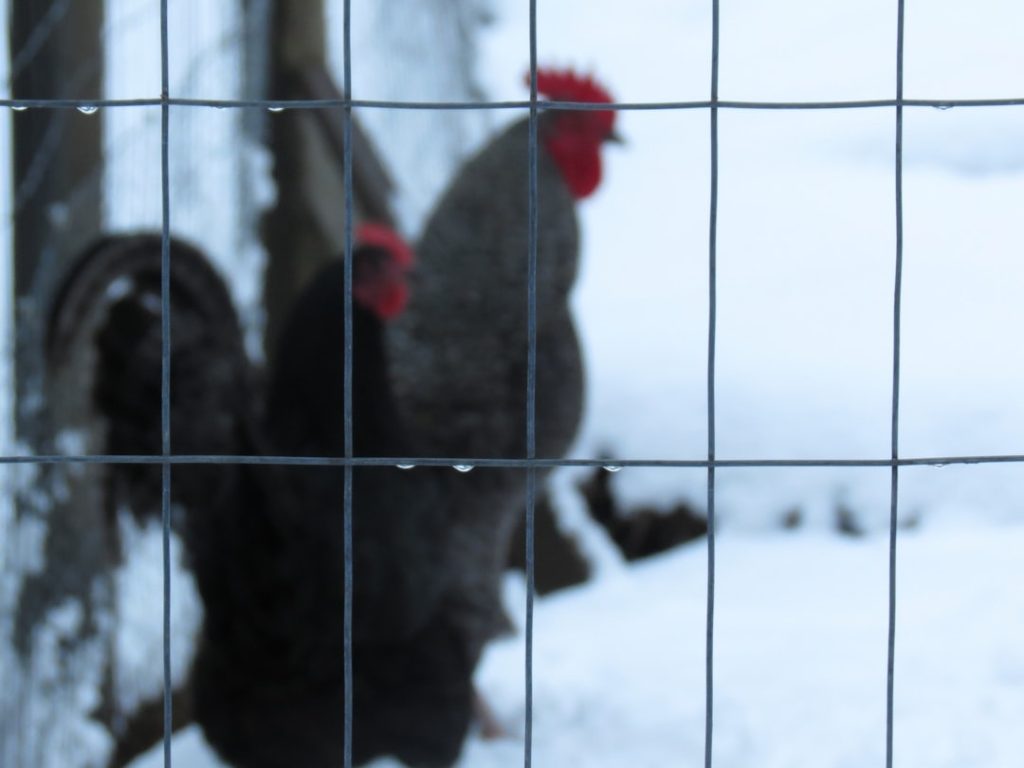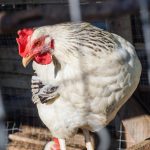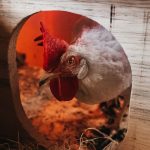Chickens are inquisitive and energetic birds with a natural inclination to forage and explore their environment. Their constant search for food and new areas to scratch and peck can lead them to test the limits of their enclosure. Understanding chicken behavior is essential when constructing a secure fence to contain them effectively.
Chickens possess the ability to fly short distances, which must be considered when designing an enclosure. As social animals, chickens may attempt to escape if they feel isolated or stressed, making it crucial to provide a secure and comfortable environment. Being prey animals, chickens are naturally vigilant and easily startled by potential threats.
This instinct can cause them to become skittish and attempt to flee from perceived danger. Taking into account these natural behaviors and instincts is vital when designing a fence that will effectively contain and protect chickens within their enclosure.
Table of Contents
- 1 Choosing the right fence height
- 2 Factors to consider when determining fence height
- 3 Common mistakes to avoid when building a chicken fence
- 4 Alternative methods for preventing chicken escape
- 5 Tips for maintaining a secure chicken enclosure
- 6 Ensuring the safety and well-being of your chickens
- 7 FAQs
- 7.1 What height should a fence be to keep chickens from escaping?
- 7.2 Why is a 6-foot fence recommended for keeping chickens from escaping?
- 7.3 Are there any other factors to consider when building a fence to keep chickens from escaping?
- 7.4 Can certain breeds of chickens fly over a 6-foot fence?
- 7.5 Are there any alternative methods to prevent chickens from escaping besides using a tall fence?
Key Takeaways
- Chickens are naturally curious and will try to escape if they feel confined or threatened.
- The right fence height for chickens should be at least 6 feet to prevent them from flying over.
- Factors to consider when determining fence height include the breed of chickens, their ability to fly, and the presence of predators.
- Common mistakes to avoid when building a chicken fence include using flimsy materials and not burying the fence underground.
- Alternative methods for preventing chicken escape include using netting or electric fencing.
- Tips for maintaining a secure chicken enclosure include regularly inspecting the fence for damage and reinforcing weak spots.
- Ensuring the safety and well-being of your chickens is essential for their health and productivity.
Choosing the right fence height
Chicken Breed and Flying Ability
The height of the fence will depend on the breed of chickens you have, as well as their ability to fly. For most standard breeds of chickens, a fence height of at least 6 feet is recommended to prevent them from flying over and escaping.
Predator Protection
Another factor to consider when choosing the right fence height is the presence of predators in your area. If you live in an area with a high population of predators such as foxes, raccoons, or coyotes, you may need to build a taller fence to provide extra protection for your chickens.
Neighboring Animals and Local Threats
Additionally, if you have neighbors with free-ranging dogs or other animals that could pose a threat to your chickens, a taller fence may be necessary to keep them safe. Ultimately, the right fence height will depend on the specific needs of your chickens and the potential threats in your area.
Factors to consider when determining fence height
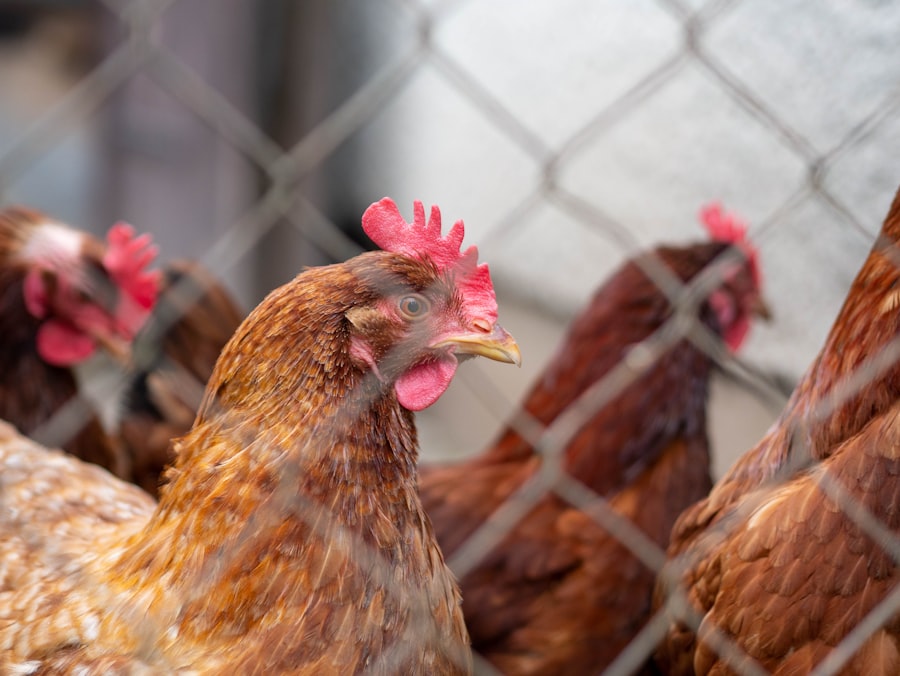
When determining the appropriate fence height for your chicken enclosure, there are several important factors to consider. The first factor to consider is the size and breed of your chickens. Larger breeds of chickens may be less likely to fly over a shorter fence, while smaller and more agile breeds may require a taller fence to prevent them from escaping.
Additionally, if you have roosters in your flock, they may be more likely to attempt to fly over a fence in order to protect their hens. Another important factor to consider is the presence of predators in your area. If you live in an area with a high population of predators such as foxes, raccoons, or hawks, you will need to build a taller fence to provide adequate protection for your chickens.
It’s also important to consider the potential for predators to dig under the fence, so installing an underground barrier or apron may be necessary to prevent this. The layout of your property and the location of your chicken coop will also play a role in determining the appropriate fence height. If your property is located near a busy road or other potential hazards, you may need to build a taller fence to prevent your chickens from escaping and getting into dangerous situations.
Ultimately, the appropriate fence height will depend on a combination of factors including the size and breed of your chickens, the presence of predators in your area, and the layout of your property.
Common mistakes to avoid when building a chicken fence
When building a chicken fence, there are several common mistakes that should be avoided in order to ensure the safety and security of your chickens. One common mistake is using materials that are not strong or durable enough to withstand the natural behaviors of chickens. Chickens are known for scratching and pecking at their surroundings, so it’s important to use sturdy materials such as welded wire or hardware cloth that will not easily be damaged by their activities.
Another common mistake is not burying the bottom of the fence or installing an apron to prevent predators from digging under the fence. Predators such as foxes and raccoons are known for their ability to dig under fences in order to gain access to chickens, so it’s important to take this into consideration when building a chicken fence. Additionally, failing to properly secure the corners and edges of the fence can create weak points where predators may be able to gain access.
It’s also important to avoid building a fence with gaps or openings that are large enough for predators to reach through and grab chickens. Even small openings can pose a threat to the safety of your flock, so it’s important to carefully inspect the entire perimeter of the fence and make any necessary repairs or adjustments. By avoiding these common mistakes and taking the time to build a strong and secure chicken fence, you can help ensure the safety and well-being of your chickens.
Alternative methods for preventing chicken escape
In addition to building a secure fence, there are several alternative methods for preventing chicken escape that can be effective in keeping your flock contained. One alternative method is using electric fencing, which can provide an additional deterrent for predators as well as prevent chickens from attempting to fly over the fence. Electric fencing can be an effective way to keep your chickens safe and secure within their enclosure.
Another alternative method is using netting or mesh covers over the top of the chicken enclosure. This can help prevent chickens from flying over the fence while still allowing them access to fresh air and sunlight. Netting or mesh covers can also provide additional protection from aerial predators such as hawks or owls.
Additionally, providing enrichment and entertainment within the chicken enclosure can help reduce the likelihood of escape attempts. By providing plenty of space for scratching and pecking, as well as toys and perches for entertainment, you can help keep your chickens content and less likely to try to escape.
Tips for maintaining a secure chicken enclosure
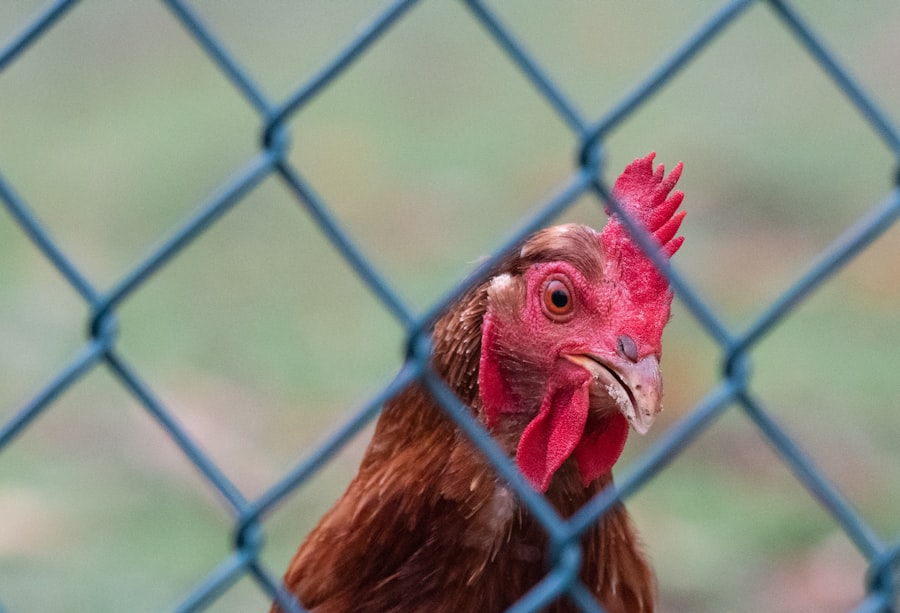
Regular Inspections and Repairs
Regularly inspecting the perimeter of the fence for any signs of damage or weakness is essential in preventing potential escape attempts by predators or your chickens. Making any necessary repairs or adjustments as soon as possible will help keep your chickens safe and secure within their enclosure.
Preventing Predator Entry
It’s also important to regularly check for any potential entry points for predators such as gaps in the fence or areas where predators may be able to dig under. Taking proactive measures such as installing an apron or underground barrier can help prevent predators from gaining access to your chickens.
Keeping Your Chickens Happy and Occupied
Providing regular enrichment and entertainment within the chicken enclosure can also help reduce stress and prevent escape attempts by keeping your chickens content and occupied. Additionally, providing plenty of space for exercise and natural behaviors such as scratching and pecking can help keep your flock happy and less likely to try to escape.
Ensuring the safety and well-being of your chickens
In conclusion, understanding the behavior of chickens is essential when it comes to building a secure fence to keep them contained within their enclosure. Choosing the right fence height is crucial in preventing escape attempts by both chickens and predators, and there are several factors to consider when determining the appropriate height for your specific needs. Avoiding common mistakes when building a chicken fence is important in ensuring its strength and durability, and there are alternative methods for preventing chicken escape that can be effective in keeping your flock contained.
Maintaining a secure chicken enclosure requires regular inspection and maintenance, as well as providing enrichment and entertainment for your flock. By taking these steps, you can help ensure the safety and well-being of your chickens within their enclosure. Building a secure chicken fence is an important aspect of responsible chicken ownership, and by understanding the behavior of chickens and taking proactive measures, you can help keep your flock safe and secure.
If you’re wondering how tall a fence needs to be to keep chickens from escaping, you may also be interested in learning about the importance of a coop for turkeys. Check out this article to find out more about the housing needs of turkeys and how to keep them safe and secure.
FAQs
What height should a fence be to keep chickens from escaping?
The recommended height for a fence to keep chickens from escaping is at least 6 feet tall. This height will prevent most chicken breeds from flying or jumping over the fence.
Why is a 6-foot fence recommended for keeping chickens from escaping?
A 6-foot fence is recommended because it is tall enough to prevent most chicken breeds from flying or jumping over it. This height provides a secure barrier to keep the chickens contained within the designated area.
Are there any other factors to consider when building a fence to keep chickens from escaping?
In addition to the height of the fence, it’s important to ensure that the fence is secure and has no gaps or openings that chickens could squeeze through. Using chicken wire or hardware cloth can help prevent chickens from escaping through the fence.
Can certain breeds of chickens fly over a 6-foot fence?
While most standard chicken breeds are unable to fly over a 6-foot fence, some lighter or more agile breeds may still be able to fly over it. In such cases, additional measures such as clipping their wings or using netting over the fenced area may be necessary.
Are there any alternative methods to prevent chickens from escaping besides using a tall fence?
In addition to a tall fence, other methods to prevent chickens from escaping include using netting over the fenced area, clipping their wings, or providing a covered run to limit their ability to fly or jump out. Regularly checking the fence for any damage or weak spots is also important in maintaining its effectiveness.
Meet Walter, the feathered-friend fanatic of Florida! Nestled in the sunshine state, Walter struts through life with his feathered companions, clucking his way to happiness. With a coop that’s fancier than a five-star hotel, he’s the Don Juan of the chicken world. When he’s not teaching his hens to do the cha-cha, you’ll find him in a heated debate with his prized rooster, Sir Clucks-a-Lot. Walter’s poultry passion is no yolk; he’s the sunny-side-up guy you never knew you needed in your flock of friends!

